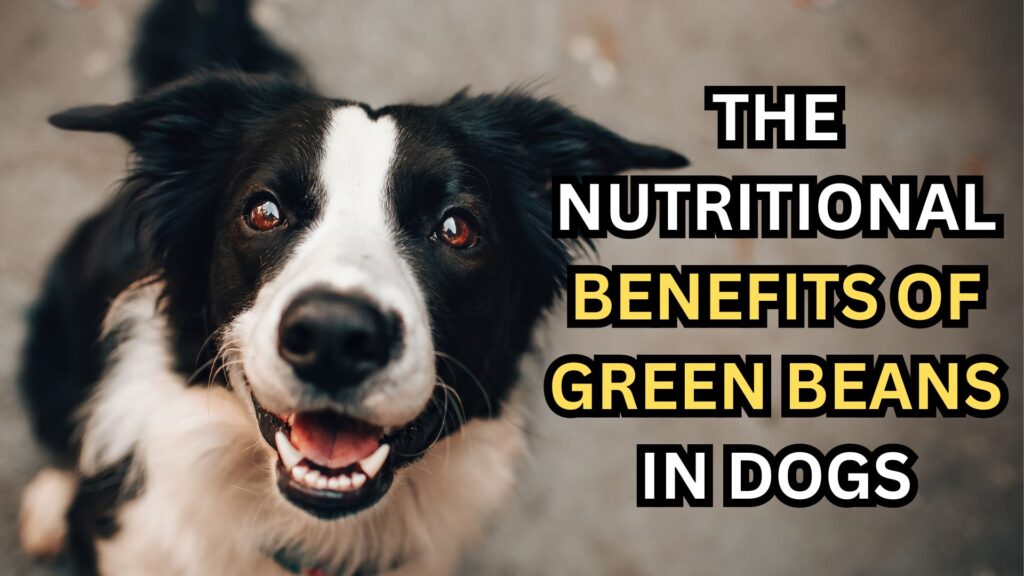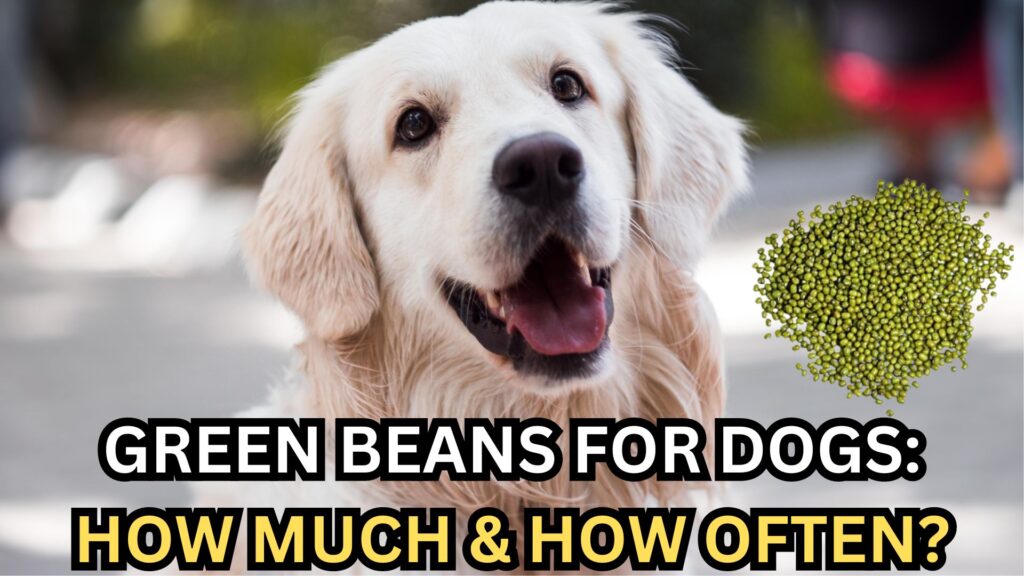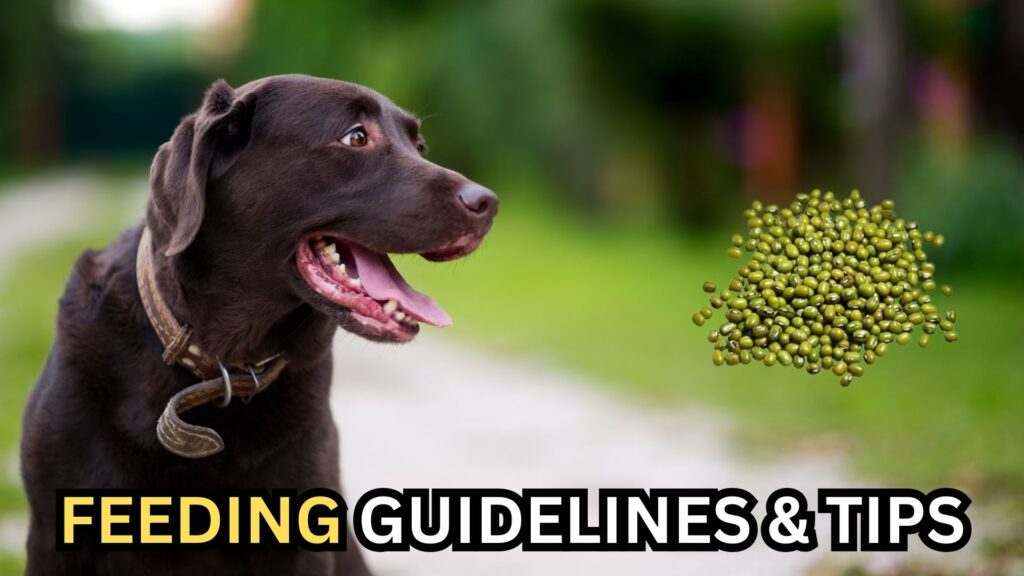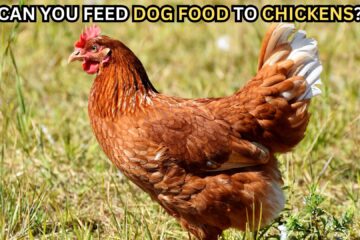Have you ever found yourself pondering what vegetables are safe to share with your furry friend?
In the vast world of canine nutrition, the question of whether dogs can partake in the simple pleasures of human foods, like green beans, is a common dilemma for pet owners.
With an increasing number of dog lovers striving to provide their pets with a balanced and nutritious diet, the inquiry into which foods are beneficial versus potentially harmful has never been more pertinent.

Green beans, a staple in many human diets, are often recommended as a healthy snack for dogs. But what makes them suitable for canine consumption, and are there any caveats to consider?
This article delves into the heart of these questions, exploring the nutritional benefits that green beans offer to our four-legged companions, while also addressing the potential risks and the best practices for incorporating this vegetable into your dog’s diet.
Can Dogs Safely Eat Green Beans?
Green beans are a versatile and nutritious vegetable that can be a healthy addition to most dogs’ diets. Rich in important vitamins and minerals, low in calories, and high in fiber, green beans offer a range of health benefits for dogs.
However, as with any human food introduced to a dog’s diet, it’s important to understand the potential risks and the proper way to include them in your pet’s meals.
Nutritional Benefits of Green Beans for Dogs

Green beans are a powerhouse of nutrition, providing a plethora of benefits to your canine companion:
- Fiber: Aids in digestion and helps maintain a healthy weight by promoting a feeling of fullness.
- Vitamins A, C, and K: Support immune system health, vision, and blood clotting functions.
- Minerals: Such as iron, calcium, and manganese, contribute to bone health and the overall functioning of the body.
- Low Calorie: Makes them an excellent snack for weight management without adding unnecessary calories to your dog’s diet.
Incorporating green beans into your dog’s diet can contribute to their overall health, offering a nutritious supplement to their regular meals.
Potential Risks and Considerations
While green beans are generally safe for dogs, there are a few considerations to keep in mind:
- Preparation: Avoid feeding dogs seasoned, salted, or canned green beans with added sodium. Opt for fresh or frozen green beans that have been thoroughly washed.
- Choking Hazard: Cut green beans into bite-sized pieces to prevent choking, especially for small dogs.
- Allergic Reactions: Although rare, monitor your dog for any signs of an allergic reaction when introducing any new food, including green beans.
Being mindful of these risks and starting with small quantities can help ensure that green beans are a safe treat for your dog.
How Much and How Often?

Moderation is key when adding green beans to your dog’s diet.
Here are some guidelines to follow:
- Starting Small: Begin with a small amount to see how your dog reacts, gradually increasing if there are no adverse effects.
- Portion Control: Green beans should not make up more than 10% of your dog’s daily food intake. They are meant to complement, not replace, their balanced diet.
- Frequency: Incorporating green beans a few times a week as a treat or diet supplement is generally safe for most dogs.
Always consult with your veterinarian before making significant changes to your dog’s diet, especially if your dog has specific health conditions or dietary needs.
Best Ways to Feed Green Beans to Your Dog
Green beans can be a nutritious addition to your dog’s diet when prepared correctly. Whether you choose to feed them raw, cooked, or canned, each method has its pros and cons.

Understanding these can help you make the best choice for your pet.
Raw, Cooked, or Canned?
Raw Green Beans:
Offering raw green beans can be a crunchy treat for your dog. They are high in fiber and retain all their nutrients. However, they should be cut into small pieces to prevent choking and make them easier for your dog to digest.
| Pros | Cons |
| High in nutrients; provides a satisfying crunch. | May be harder to digest for some dogs; potential choking hazard if not properly sized. |
Cooked Green Beans:
Steaming or boiling green beans makes them easier to chew and digest, which can be especially beneficial for puppies and senior dogs. Avoid adding any salt, spices, or oils.
| Pros | Cons |
| Easier to digest; softer texture is better for dogs with dental issues. | Cooking can reduce some nutrient levels; must avoid adding harmful seasonings. |
Canned Green Beans:
If opting for convenience, canned green beans can be a quick addition to your dog’s meal. Choose cans labeled as “no salt added” or “low sodium” to avoid excess salt.
| Pros | Cons |
| Convenient; soft texture is easy to digest. | Often contain added sodium and preservatives, which are not ideal for dogs; less nutritious than fresh options. |
Creative Ideas for Incorporating Green Beans into Meals
To make green beans more appealing and to add variety to your dog’s diet, consider the following suggestions:
- Mix with Regular Food: Chop green beans into small pieces and mix them with your dog’s regular food. This can add texture and volume without many calories, helping with weight management.
- Homemade Green Bean Treats: Puree cooked green beans and use the mixture to fill silicone molds or ice cube trays. Freeze them for a cool, refreshing treat.
- Interactive Feeding Toys: Place chopped green beans inside puzzle toys or Kong toys to provide mental stimulation as your dog works to retrieve them.
- Dehydrated Green Bean Chips: Dehydrate slices of green beans to create crunchy, healthy chips that your dog will love as a treat.
By varying how you prepare and present green beans, you can keep your dog interested in this healthy snack and ensure they reap the nutritional benefits.
Remember, always introduce new foods into your dog’s diet gradually and in moderation to monitor for any adverse reactions.
FAQs About Dogs and Green Beans
Can Dogs Have Green Beans as a Regular Part of Their Diet?
Yes, dogs can have green beans as a regular part of their diet, provided they are given in moderation.
Green beans are a low-calorie, nutritious snack that can offer variety and additional fiber to a dog’s diet without contributing to unnecessary weight gain.
They should complement, not replace, a balanced diet tailored to your dog’s nutritional needs.
Are There Any Dogs That Should Avoid Green Beans?
While green beans are safe for most dogs, those with specific health issues such as kidney problems might need to avoid them due to their natural purine content, which can exacerbate certain conditions.
Always consult with a veterinarian before introducing green beans, or any new food, into your pet’s diet, especially if they have existing health concerns.
How to Introduce Green Beans into Your Dog’s Diet?
Introduce green beans into your dog’s diet gradually to avoid digestive upset. Start with a small amount of chopped, plain green beans mixed into their regular food.
Monitor for any adverse reactions, such as gastrointestinal discomfort or allergies, and if none occur, you can slowly increase the amount over time.
Can Green Beans Help in Weight Management for Dogs?
Yes, green beans can be a helpful tool in managing a dog’s weight. Their high fiber content can make dogs feel fuller without adding a significant number of calories to their diet, making them an excellent treat for dogs on a weight loss plan.
However, weight management should be approached holistically, incorporating proper diet, regular exercise, and veterinary guidance.
Summary
Throughout this article, we’ve explored the various aspects of incorporating green beans into a dog’s diet, from the nutritional benefits and potential risks to the best ways to prepare and serve them.
Green beans can be a healthy, low-calorie treat for dogs, suitable for weight management and adding dietary variety.
However, it’s crucial to introduce them gradually and in moderation, ensuring they do not replace essential components of a balanced diet.


